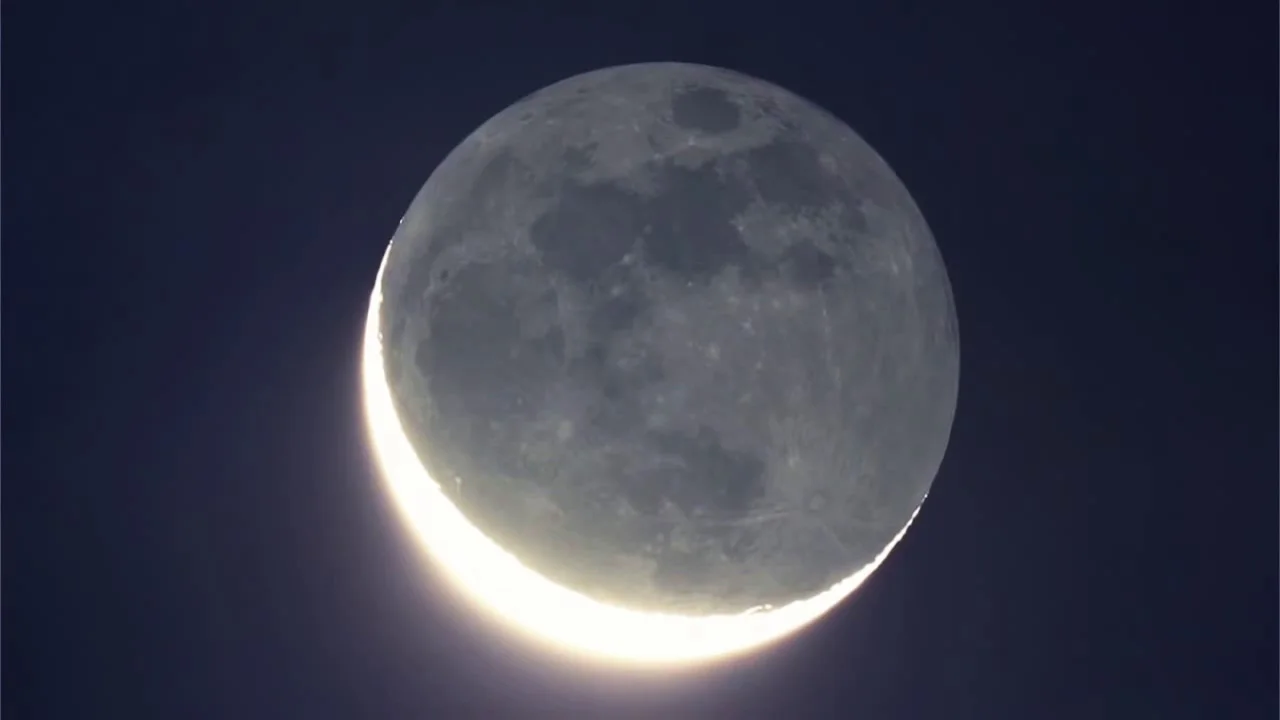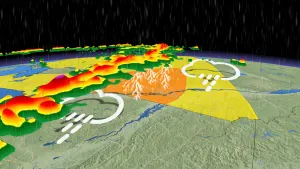
'Earthshine' is dimming and that's bad news for the climate
Earth's warming oceans are causing the planet to reflect less sunlight back into space.
Earthshine is one of the most spectacular sights in our night sky. Yet, this astronomical phenomenon is slowly vanishing, and this is providing us with a new warning sign for the climate.
Gaze up at a thin Crescent Moon as it hangs above the horizon, and you will often be able to dimly make out the features that are immersed in the shadow of the Moon's dark side. This phenomenon is known as Earthshine.

Sunlight reflected from Earth shines upon the Moon's dark side, in a phenomenon called Earthshine. Credit: Science@NASA
Earthshine results from Earth's albedo. Of all the incoming sunlight that reaches Earth, roughly one-third gets directly reflected back into space by bright cloud tops and icy surfaces.
Some of this reflected sunlight shines onto the Moon's surface. This effect is best seen just before and just after a New Moon. That's when the greatest amount of dark lunar surface is lit by the greatest amount of reflected light from Earth. Anyone looking up at the Moon on those nights will be able to pick out the most prominent features of the lunar surface, even though they are not lit by the direct light of the Sun.

Viewing the Moon from Earth and Earth from the Moon during any month reveals how their phases are complementary. As shown in this image, anyone standing on the lunar surface during a thin Crescent Moon would see a brightly lit "nearly full" Earth. Credit: NASA
However, according to a new study, this phenomenon is slowly disappearing.
Researchers gathered two decades worth of observations of Earthshine, from 1998 to 2017, taken at the Big Bear Solar Observatory, in San Bernardino National Forest, east of Los Angeles, California. The data they collected revealed that Earthshine had dimmed over that time, by about 0.5 per cent. Since the dimming they observed did not match up with changes in the Sun's brightness during that same time period, that means the dimming is being caused by Earth.
In other words, Earth's albedo is decreasing, thus the planet is now reflecting less sunlight back into space than it was 20 years ago.
"The albedo drop was such a surprise to us when we analyzed the last three years of data after 17 years of nearly flat albedo," Philip Goode, the lead researcher on the study from the New Jersey Institute of Technology, said in a press release from the American Geophysical Union (AGU).

This graph shows two decades worth of Earthshine data (black points), alongside data from NASA's Clouds and the Earth’s Radiant Energy System (CERES) instruments in orbit (blue points). Both reveal that Earth's albedo is decreasing. CERES detected a significant drop in albedo in 2019. Credit: Goode et al. (2021), Geophysical Research Letters.
While the slow disappearance of Earthshine would be terrible for stargazers, there is a much more significant and troubling impact from this discovery.
Over the years, one of the uncertainties in Earth's climate system has been whether rising ocean temperatures would increase or decrease cloud cover.
If it increased cloud cover, it could create a self-limiting effect on climate change. Greater cloud cover would increase the amount of sunlight being reflected back into space. As a result, with less sunlight reaching the surface, it would reduce the amount of heat being added to the climate system.
On the other hand, if warming oceans resulted in less cloud cover, it would lower the planet's albedo. More sunlight would reach the ground, which would result in more heat being added to the climate system. Over time, this would increase the rate of global warming and make the impacts of climate change worse.

Photographed from the International Space Station on July 31, 2011, this image shows the Crescent Moon shining above the limb of Earth, along with the different layers of the atmosphere (troposphere in orange, stratosphere in blue, fading into the mesosphere). The dark side of the Moon is dimly illuminated by the phenomenon of Earthshine. Credit: NASA
This new study found that, along with the detected decrease in Earthshine from their observations, NASA's Clouds and the Earth's Radiant Energy System (CERES) project also saw a reduction in the amount of cloud cover over the eastern Pacific Ocean. The CERES instruments, carried by NASA's Terra and Aqua satellites, found fewer bright, low-lying clouds over a region of the Pacific Ocean off the west coasts of North and South America.
This reduction in clouds is over a region of the ocean where previous studies have shown sea surface temperatures to be on the rise. The increase in temperatures is likely due to changes in a large-scale climate pattern known as the Pacific Decadal Oscillation (PDO).

Thus, based on the findings of this study, it would appear that warmer oceans are reducing the amount of cloud cover, which is very bad news.
Also, although the drop in albedo is only 0.5 per cent, the amount of extra heat it adds to our climate system is nearly the same as what human activity added over the same time period.
"The two-decade decrease in earthshine-derived albedo corresponds to an increase in radiative forcing of about 0.5 Watts per square metre, which is climatologically significant," the researchers wrote. "For comparison, total anthropogenic forcing increased by about 0.6 Watts per square metre over the same period."











